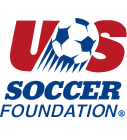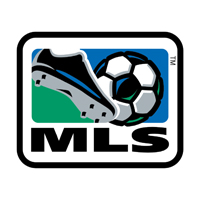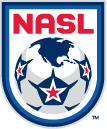As the governing body of soccer in all its forms in the United States, U.S. Soccer has played an integral part in charting the course for the sport in the USA for almost 100 years. In that time, the Federation’s mission statement has been very simple and very clear: to make soccer, in all its forms, a preeminent sport in the United States and to continue the development of soccer at all recreational and competitive levels.To that end, the sports exponential growth in the past two decades has been nothing short of remarkable.Multiple soccer specific stadiums have opened their doors to resounding success, and new arenas around the country are currently being planned and built. The National Training Center in Carson, California is entering its seventh year of existence, and in 2007 the U.S. Soccer Development Academy kicked off with much fanfare at the state of the art facility.The progress of soccer in the United States has been astounding and is all the more astonishing when one considers where the sport was a mere 20 years ago.In 1989, the U.S. Men’s National Team hadn’t played in a World Cup in 40 years and the U.S. Women’s program was just four-years old. U.S. Soccer was playing games in small stadiums that were rarely filled to capacity. There were few games being televised (and none without commercials during play). There were no soccer-specific stadiums, and there were no high-level professional outdoor leagues of which to speak.
Since that time, the state of U.S. Soccer has evolved significantly. The U.S. MNT has played in six consecutive World Cups, and advanced to the quarterfinals at the 2002 event. U.S. Soccer is a world leader in women’s soccer at every level, and the team has won two Women’s World Cups, along with three Olympic Gold Medals. The United States has also hosted three World Cups with the support of its members and strong organizational abilities.
Professionally, Major League Soccer continues to grow in popularity and prestige, with the 2011 season set to welcome the Portland Timbers and Vancouver Whitecaps FC as the league is set to grow to 18 teams. On the women’s side, Women’s Professional Soccer had a successful inaugural season in 2009 to again provide the best female players a top-tier professional league. Perhaps more importantly of all, no fewer than a half dozen major soccer specific stadiums are in place now coast-to-coast with more facilities en route.
Coaching continues to get bigger in the United States, and with more classes being offered around the country, the number of licensed, well-educated trainers and managers is larger than ever. As soccer continues to grow, the education level amongst coaches has been tailored to match the expanding pool of talent in the United States, and in 2006 the U.S. Soccer offered its first ever Goalkeeper Coaching License.
In 2007, full-time officials were hired for the first time in the federation’s history, and more programs are being planned as U.S. Soccer continues to set positive trends for referees in CONCACAF to help improve referee development across the spectrum of all grades and at all ages.
For more information on all U.S. soccer programs, visit the official organization website at ussoccer.com.
The Foundation was established in 1994 and serves as the Major Charitable Arm of Soccer in the United States. Thanks to support from donors, our Corporate Partners, and countless youth development organizations, the Foundation has provided over $55 million in grants, financial support, and loans to help fund programs and projects in all 50 states. Hundreds of thousands of individuals have benefited from the Foundation’s support and the need continues to grow.
The U.S. Soccer Foundation seeks to improve the health and well-being of children in urban economically disadvantaged areas using soccer as a vehicle for social change. By supporting the development of Places to Play, Places to Grow and Places to Learn, we work to ensure that children in underserved communities have easy and affordable access to quality soccer programs that support their physical and personal development.
Childhood obesity rates have increased sharply in the United States over the past 30 years. Today, nearly one-third of children and adolescents are overweight or obese. By keeping our youth active we can reverse this pattern. In many urban communities, however, there is a lack of suitable recreation facilities and organized programming. Our Urban Soccer Programs provide inner-city children with safe havens to play soccer, stay active and develop important life skills.
We believe in the power of the game to make a difference. Every child should have a chance to play, to be a teammate, to build self-confidence and to live a healthy and active life.
Major League Soccer was founded in 1993 as part of the United States’ successful bid to host the 1994 FIFA World Cup. The first season took place in 1996 beginning with ten teams. Instead of operating as an association of independently owned teams, MLS is a single entity where each team is owned and controlled by the league’s investors. The league’s closed membership makes it one of the world’s few soccer leagues not using promotion and relegation.
The North American Soccer League (NASL) is a professional men’s soccer league in the United States, Canada, and Puerto Rico which began league play on April 9, 2011. It has been sanctioned as a Division II Professional League by United States Soccer Federation (U.S. Soccer), placing it under Major League Soccer in the hierarchy. It also has teams from Canada and Puerto Rico.
The league was founded in late 2009 after multiple teams broke away from the United Soccer Leagues organization following the sale of USL to NuRock Soccer Holdings earlier that year. The official name of the league was announced on November 23, 2009.
The inaugural season was expected to begin play in April 2010, but the United States Soccer Federation refused to sanction the new league. In January 2010, the USSF elected to operate an interim USSF Division 2 Professional League for the 2010 season, comprising twelve teams from both the NASL and USL-1.
Following NASL’s annual general meeting, the league announced its formal application to the USSF for Division 2 sanctioning in the United States on November 11, 2010 and was provisionally approved by the USSF on November 21, 2010. NASL began regular league play April 9, 2011 with eight members comprising former clubs from the USL First Division, the USL Second Division, plus expansion franchises, with plans in place for at least two additional clubs by 2013. The provisional sanctioning was revoked by the USSF in January due to the collapse of two of the ownership groups involved with NASL and serious questions about several others. On February 12, 2011 the USSF again granted provisional sanctioning for the 2011 season for Division 2 play.
Current Teams
| Team | City | Stadium (Capacity) | Founded | Joined | |
|---|---|---|---|---|---|
| Atlanta Silverbacks | Atlanta, GA | Atlanta Silverbacks Park (7,500) | 1998 | 2011 | |
| Carolina RailHawks | Cary, NC | WakeMed Soccer Park (10,000) | 2006 | 2010 | |
| FC Edmonton | Edmonton, AB | Clarke Stadium (1,200) | 2010 | 2011 | |
| Fort Lauderdale Strikers | Fort Lauderdale, FL | Lockhart Stadium (20,500) | 2006 | 2010 | |
| Minnesota United | Blaine, MN | National Sports Center (8,500) | 2010 | 2010 | |
| New York Cosmos | Hempstead, NY | James M. Shuart Stadium (15,000) | 2010 |
2013 | |
| San Antonio Scorpions | San Antonio, TX | Toyota Field (8,000) | 2010 | 2012 | |
| Tampa Bay Rowdies | St. Petersburg, FL | Progress Energy Park (7,250) | 2008 | 2010 |
On hiatus
| Team | City | Stadium | Founded | Joined | |
|---|---|---|---|---|---|
| Puerto Rico Islanders | Bayamón, PR | Juan Ramón Loubriel Stadium (22,000) | 2003 | 2011 |
Expansion teams
| Team | City | Stadium | Announced | Joining | |
|---|---|---|---|---|---|
| Ottawa Fury | Ottawa, ON | Frank Clair Stadium | 2011 | 2014 | |
| Virginia Cavalry | Ashburn, VA | Edelman Financial Field | 2012 | 2014 | |
| Indy Eleven | Indianapolis, IN | Carroll Stadium | 2013 | 2014 |




